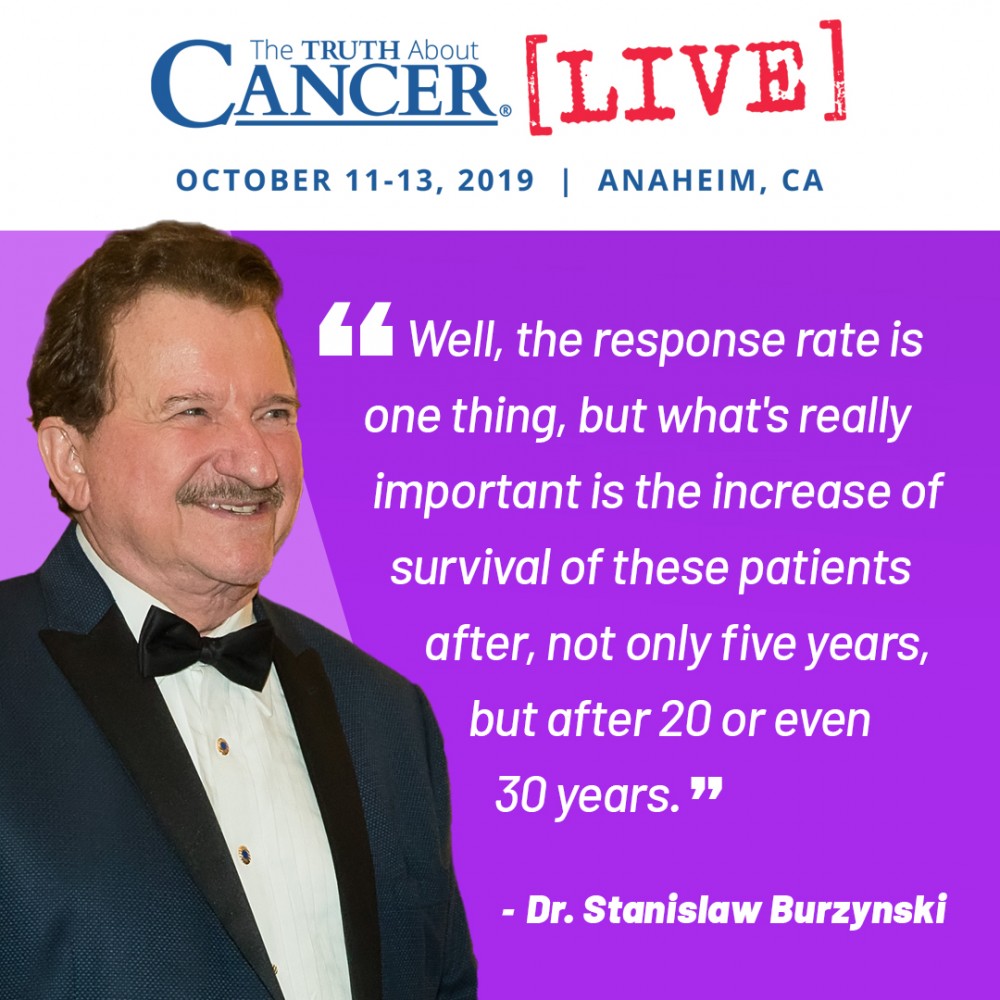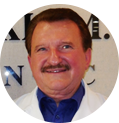Video Transcript – The Right to Try Act Is Saving Lives – Part 3 (video)
If you missed part 2, watch it here!
Well, so basically, we’re talking about treatment of cancer genes. Laboratory data indicates that antineoplastons affect the expression of approximately 100 genes important in cancer. Additional prescription medications usually work on a single gene. But, together with antineoplastons, they cover from 150 to 200 genes. The possibility of affecting 200 genes by using antineoplastons in combination with the other medications, not a chemotherapy but gene-targeted medication or immunotherapy, gives doctors at least a chance to cure many types of cancer.
We are using this principle for over 20 years, treating cancer genes instead of cancer name, and the results were quite remarkable compared to what can be accomplished with standard of care. We presented the results first time in 2008, and they were well-received by the doctors. So, what is the principle of our treatment? We should clear our symptoms and signs of cancer. The patient should be free of tumors, symptoms of cancer, and any other laboratory evidence of cancer. That’s number one. Number two, we need to destroy cancer’s genome. We remove abnormal genes and cure cancer, and these genes are usually acquired during our life. These are not mutated genes, which are inherited from parents with few exceptions. They can be eradicated, which we can prove. Well, the first goal reducing the signs and symptoms of cancer, reducing the tumor, can be accomplished in some patients through standard treatment. The second goal requires targeted immunotherapy and antineoplastons. When we have the situation in the clinic when the patient who had previously large tumors suddenly has normal scans, we assume that it’s not accumulation of cancer cells in the body larger than 0.1 gram by weight. Well, this means that [inaudible] test can easily miss approximately 100 million cancer cells. The cancer genome, which was produced during patient life, can be completely destroyed, and we can prove it by genomic tests. Patient genomic tests, which are done on blood and tissue, permits us to construct the treatment plan, which typically consists of antineoplastons and additional medications. The treatment is easy to administer. We don’t need hospitals, except one percent of patients, because you don’t see bad adverse reactions. It’s done outpatient, and the results are monitored by standard medical procedures. It is attempted to have answered about treatment efficacy in one to two months, and we can do it in majority of patients. We don’t want to waste time if the treatment’s not working.
Once there are no signs and symptoms of cancer, and once we have evidence from repeated genomic tests that we don’t have anymore mutated genes, we would like to continue the treatment because for another three months to make sure that we did not miss anything. After the treatment, the blood test which will tell us about abnormal genes are extremely sensitive, about 100 million more sometimes more sensitive than the best scans. They can detect abnormal genes in the amounts of 1 nanogram per cubic cc of blood, which is 1 billion parts of a gram per cubic cc of blood. If such tests, which initially show a number of mutated genes, become clear as a result of treatment, we are almost assured that the patient is free from cancer. However, it could be that the patient may have these genes present in blood at the lower level, like 1 trillion parts of a gram per cubic cc of blood. This cannot be detected now because the standard of tests are not so sensitive, but hopefully, it will be done in the near future.
So, that treatment can be discontinued when we find that we don’t have any more signs, symptoms of cancer, and abnormal genes in blood. Easier cases are treated with tablets taken orally or the prescription drugs from antineoplaston groups. For this medication, we obtain already FDA approval as a prescription drug. Terminal cases should be treated with intravenous antineoplastons, which were permitted by FDA for face the clinical trials, which is the last step in the approval process. This is a little more complex treatment that’s still tolerated very well. After this continuation of the treatment, the patients are followed by standard medical examination tests and periodical genomic testing in blood to detect possible reoccurrence. Initially, we would like to run such tests every three months of blood samples to see if we don’t see any genes showing up. If some of them are showing up, we still need to take treatment. And as I mentioned before, it doesn’t cost anything, patients who are in the United States. This is not done in our laboratory, it’s done by the company in L.A. But there are some other companies which are moving into this field.
If you don’t see any recurrence of cancer after five years, we can declare the patient is cured. Well, before we were able to embark on this type of program, we were limited to clinical trials, which were permitted by FDA. Currently, we have the results of thirteen phase 2 clinical trials performed in our clinic under the supervision in brain tumors and one randomized controlled trial in colon cancer with liver metastasis, which was done by the team of Japanese doctors. This was done independent from us. This clinical trials, which are done only with antineoplastons without the other medication because they did not exist at that time, prove the response rate in the range of 12 to 60 percent of kinds of tumors diagnosis. The response rate is determined by the tumor size. If the tumor is gone, it’s a complete difference. If the tumor size indicates more than 50 percent, it’s a partial response. And that is what is called objective response. This is usually done by measurement of the tumor size base scans.
Well, the response rate is one thing, but what’s really important is increase of survival of these patients after, not only five years, but after 20 or even 30 years. And we have such patients, which was accomplished first time in medical history for the toughest tumor you can get. And I will show it to you later during this presentation.
After the starting of the antineoplastons and the entire cancer genome was finished, we realized that the activity on one-handed genes is not enough to have good results in many patients. If we add additional medications, which work on the genes for which antineoplastons don’t work, we can dramatically increase the response. We could start doing this in 1991 when one of the medications from antineoplastons group was permitted by FDA is prescription medication, and this one is in tablet form. Commercial genomic tests were not yet available for testing blood in 1999, and the FDA prohibited the use of additional drugs with intravenous antineoplaston, but we can use tablets to treat these patients. We introduced genomic testing on blood in our laboratory. So, in 1999, we started such procedures.
We began treating patients with oral antineoplastons and a few targeted medications, which were available at that time. We published the results in 2008. We reported the response rate from 50 to 60 percent in breast, prostate, head and neck, and unknown primary cancer and non-Hodgkin’s-Lymphoma. We found up to 47 percent response in colon, ovarian, and uterine cancer. The quantum improvement of cancer within the last three years went over 100 targeted medications, and immunotherapy medications became available. And the blood and tissue and genomic test were covered by insurance.
The Right to Try law permitted us to use for the treatment of terminal cancer patients intravenous antineoplastons, and we are able to correlate genomic data, which availability of medications, and successfully treat patients with antineoplastons in combination of prescription medications. We prove that the hopeless case of cancer patients will sometimes have two weeks to four weeks estimated life can be successfully treated by using available drugs, which are not cited toxic chemotherapy.
Last year, FDA approval of two drugs based on this principle to treat genes which are causing cancer indicated the beginning of the paradigm shift in this area. Thank you. We reported the results of the treatment of two groups of patients with one of the toughest malignancy, which is glioblastoma. This is a brain tumor which is usually deadly, which relapse after surgery, radiation, and chemotherapy. The standard of care of treatment is powerless to treat such patients. It didn’t save the lives of Senator Edward Kennedy or Senator McCain. The director of National Cancer Institute died from this tumor and could not be saved. But, we saved a number of patients with this tumor. Some of them are now surviving over 20 years in normal life. The response rate to oral antineoplastons regiment, plus the other gene-targeting medications, was 54 percent, and an IV regimen was really unbelievable, 85 percent. These people are usually dead within six months, but our survival over six months was 86 percent. Thank you.



















Leave a Reply